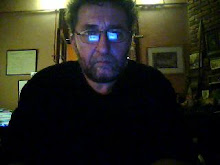Art is contemplation. It is the pleasure of the mind
which searches into nature and which there divines
the spirit of which Nature herself is animated.”
Auguste Rodin quotes
What is contemporary art besides de chronological definition…We believe is the synthetic expression thru means of artistic tools of our historical time, our epoch, its own cultural necessities. Different art types are possible in different time eras, because these are a cultural response to a state of life, thought and feelings.
Art, in all its forms has always been an interpretation of reality. Given the tools humanity developed throughout time, the ways in which life, thought and action –reality as a wholesome- were recorded artistically depended upon them.
The singular interpretation of reality by art has and still is shaping it as no other discipline, the subjective relationship of man and its surroundings.
Art has always been a relationship between the subjective and time, a given moment, a determined society. Art is never a-temporal, thought it might seem like that… Even the so-called timeless works, are timed. Never in history was a given art-work been admired and appreciated alike throughout the centuries and decades. Hence, what we’re producing currently as art is and will be a reflection of a moment in time –explicitly or implicitly- regardless the means of appropriation whether if its abstraction, lyricism, realism, etc…
In Argentina, the turning point in what can be addressed as contemporary art can be spotted around the 50s. It was then, when Modernity Vanguards were taking up the stage of world art. Latin American identity was developing within its limits returning to itself, to its sense of uniqueness; having being born under the aegis of European influx and developed in the margins of an outer world, it was throughout its institutional and borderline non institutional developments that it began to look inside its self sense of aesthetics and culture, stories and histories…The necessity of updating the artistic language so broadly expressed within the world’s art scene, it was also felt in the Latin sub continent. But that need bumped into a deeper conflict, that is the local and the foreign, the indigenous and the European. There’s an identity conflict which was once conceived as fixed, steady, permanent, anchored far away from the present, beholding the possibility of change and reality character for itself and no one but its immediate world. But, when the winds of change came, the possibility of subverting the given state of art, revolution of techniques, conceptions, ideas, reality that was to be fixated on canvass has been found to be pure constant evolution…
Artists then began to be an introspect to there proper souls… This syntax of a problem would come to a solution only two decades latter after it was first conceived as an issue that needed solution.
The seventies provided a rich era of thought and philosophy, and the new logical conceptions provided the conceptual troubled artists –those who felt as being pulled from global to local and back to universal- an interesting way out: identity appeared as a synthesis, multicultural, multi ethnic, hybrid. It was the opportunity of incorporating more universal like mediums and languages, featuring local contents and traditions, self imposed desires. The result was a true new meaning of universal sources, understood and defined from the immediate concrete onwards; the new identity conception gave birth to a new sort of Latin American and argentine art.
What were definitive answers, radical transformations or global synthesis, became individual resolutions of contemporary art, that art of the multiple, the diverse, the use of the own and that of the other, the popular and the traditional, the new and the old techniques, the modern and the contemporary blend into the self need of expression, using all available means and tools, creating the ones that weren’t there yet.
Contemporary Argentine artists such as Vito Campanella and Leopoldo Torres Aguero, each within its field, within its view of the world and the techniques and style that they developed to be their own, are a living example of these trends we pointed out above.
Francisco Adaro, a young Argentine artist whose works are evolving greatly in these days, exhibits the above mentioned synthesis, of style between the own and the foreign, the traditional and the avant-garde styles. While Monique Rozanes has synthesized modernity in her sculptures of contemporary art.
Helmut Ditsch and Guillermo Kuitka, each in their own personal style have conquered the world with their outstanding technique, imagination as well as artistic conception. Both argentine, both unique, each brilliant in his own world of significances, admirers and collectors…
Contemporary Argentine Art is not only prolific, but in its own, unique, with a true sense of aesthetic self conception shaped upon the endless conceptual canvases. Its outstanding growth in the local and international art scene, in strong art centers such as France, England, United States, Germany and Latin American capitals of great artistic feel… The Argentine contemporary art is not only up to the challenge of today’s art scene, but it’s presenting a self statement of style, conception and concept.
So if you are interested in Art or Antiques from Argentina, and you are travelling to Buenos Aires please feel free to contact and email us.
Please feel free to contact Flor Rodriquez by emailing her: Email: Flor Rodriguez. or Bob Frassinetti: For more information: Email: Bob Frassinetti. Press here to go back to web blog:Daily Updates on Art, Antiques, Collectibles as well as travel information for Buenos Aires, Argentina. Phone me thru Skype, ID: Bob Frassinetti or you can also chat with me thru Yahoo, press here:
Yahoo Contact
Find me on MySpace and be my friend!




No comments:
Post a Comment